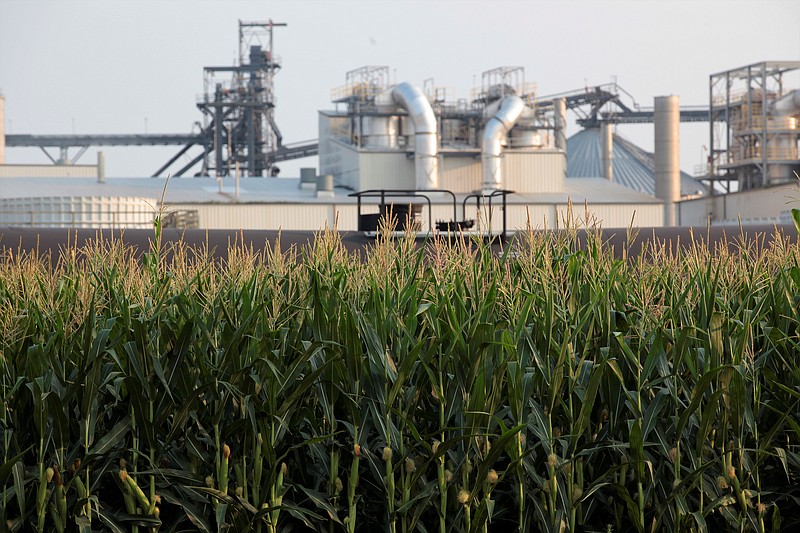SIOUX FALLS, S.D. (AP) — Two companies seeking to build thousands of miles of pipeline across the Midwest are promising the effort will aid rather than hinder the fight against climate change, though some environmental groups remain skeptical.
The pipelines would stretch from North Dakota to Illinois, potentially transforming the Corn Belt into one of the world’s largest corridors for a technology called carbon capture and storage.
Environmental activists and landowners have hindered other proposed pipelines in the region that pump oil, carrying carbon that was buried in the earth to engines or plants where it is burned and emitted. The new projects would essentially do the opposite by capturing carbon dioxide at ethanol refineries and transporting it to sites where it could be buried thousands of feet underground.
Both companies planning the pipelines appear eager to tout their environmental benefits. Their websites feature clear blue skies and images of green fields and describe how the projects could have the same climatic impact as removing millions of cars from the road every year.
However, some conservationists and landowners are already wary of the pipelines’ environmental benefits and safety, raising the chances of another pitched battle as the projects seek construction permits.
“It seems like they are running a casino of risk and we are going to pay for it,” said Carolyn Raffensperger, the director of the Science and Environmental Health Network, expressing fears about a leak that could put North Dakota landowners like herself at risk. “We need to think this through very carefully, and I do not see the players in place to do that.”
The pipelines could fall into a longstanding divide among environmentalists. President Joe Biden and many Republicans are pushing a strategy for tackling climate change that offers a financial boon to industries that use carbon capture and storage to reduce their emissions. But others, such as Greenpeace and Vermont Sen. Bernie Sanders, argue the focus should be completely on developing renewable energy sources and that carbon capture just prolongs dependence on fossil fuels.
Navigator CO2 Ventures, which is planning a pipeline that will stretch over 1,200 miles through Iowa, South Dakota, Nebraska, Minnesota and Illinois, says it is offering “carbon capture solutions for a greener planet.” While Summit Carbon Solutions, whose pipeline will connect refineries in Iowa, Minnesota, Nebraska and South Dakota to a sequestration site in North Dakota, says it plans to build the world’s largest carbon capture and storage project. Both hope to start some operations by 2024.
“There’s so much societal momentum that says this is something we want to do — should do, need to do — for the public’s benefit,” said Matt Vining, the CEO of Navigator CO2 Ventures. “My project and many others will get done and should get done.”
Supporters say the pipelines are a much-needed win for both agricultural businesses and the environment. The two projects are expected to run into the billions of dollars, spurring construction jobs. And they advance a technology crucial to achieving a 2050 goal of net-zero carbon dioxide emissions — in which every gram of emissions is accounted for by providing a way to eventually suck it back out of the atmosphere.

